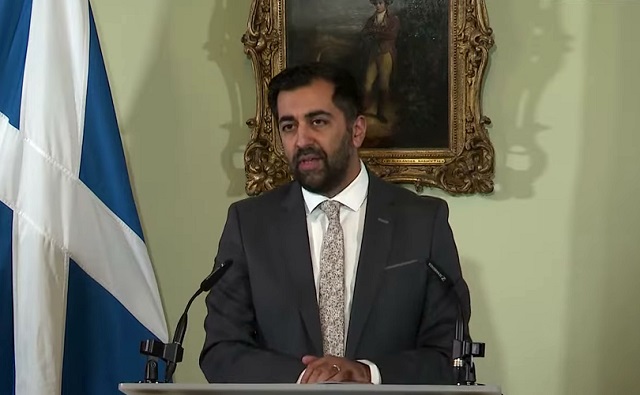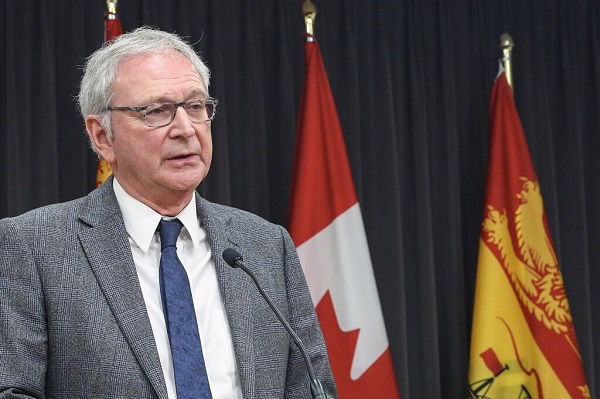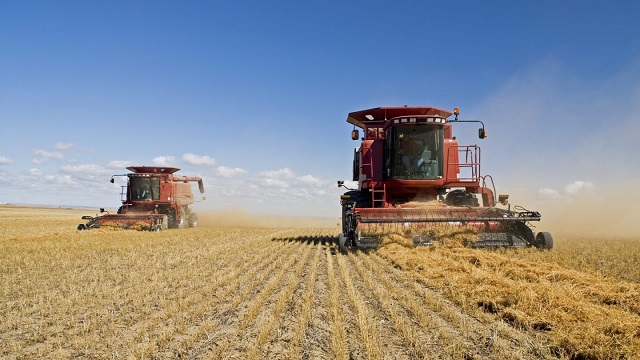National
Trudeau’s Christmas Gifts to Canadians: Unaffordable Housing, Inaccessible Health Care, Out-of-Control Immigration and Sagging Productivity
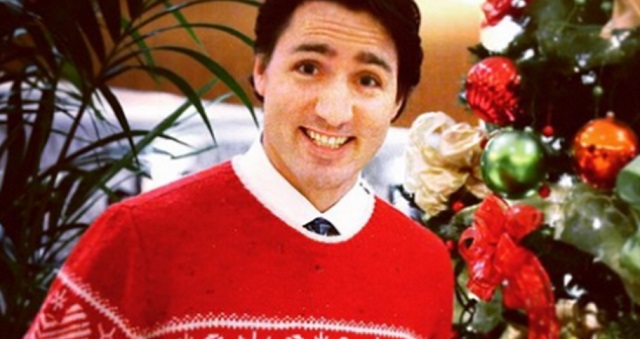
Crime
The US Canadian border: Greatest number of terrorist watch list individuals being apprehended at northern border

A Border Patrol agent standing watch at the Montana-Canada border in the CBP Spokane Sector. The Spokane Sector covers the U.S.-Canada border along the northwestern section of Montana, part of Idaho, and the eastern part of Washington.
From The Center Square
Lack of operational control at northern border poses national security threats
The northern border largely has been unmanned and understaffed for decades as federal reports issue conflicting conclusions about how much, or how little, operational control exists.
Some officials have suggested the U.S. Department of Homeland Security has just 1% operational control over the northern border after a 2019 General Accounting Office audit of U.S. Customs and Border northern border operations. But a December 2022 DHS report claimed, “The Border Patrol is better staffed today than at any time in its 87-year history,” noting no surveillance of extensive parts of the northern border existed prior to 9/11.
After 9/11, several federal agencies were combined to fall under the newly created Department of Homeland Security. Within 20 years, roughly 950 miles along the U.S.-Canada border from Washington to Minnesota, and roughly 200 miles along the northern border in New York and Lake Ontario, were under unmanned aircraft surveillance. None of these areas “were covered prior to the creation of DHS,” DHS says, meaning the northern border was largely unprotected since Border Patrol’s founding in 1924.
In 2012, DHS released its first unified department strategy for U.S.-Canada border security, prioritizing “deterring and preventing terrorism and smuggling, trafficking, and illegal immigration; safeguarding and encouraging the efficient flow of lawful trade, travel, and immigration; and, ensuring community resiliency before, during, and after terrorist attacks and other disasters.”
Within 10 years at the northern border, more than 2,200 Border Patrol agents were stationed between ports of entry; nearly 3,700 CBP officers were stationed at ports of entry; more than 35 land ports of entry were modernized; and thermal camera systems, mobile and remote video surveillance systems had been deployed.
Havre Sector Border Patrol agent patrolling northern border on an ATV. The Havre Sector covers the U.S.-Canada border along most of Montana’s northern border, and includes part of Idaho and all of Wyoming, Colorado and Utah.
Despite these improvements, “the northern border is under-resourced by far compared to the southwest border,” former Border Patrol chief Mark Morgan told The Center Square. “But at the same time, it still represents significant threats. Cartels are expanding their operations, flying people into Canada, which doesn’t require a visa, presenting an opportunity for terrorist watch-listed individuals to exploit. It’s much easier to get to Canada to come across.”
“Data from 39 months shows terrorist watch-listed individuals are coming here every day and they aren’t stopping,” Morgan added.
For years and prior to the current border crisis, there weren’t enough personnel to cover all shifts, and the infrastructure, technology and equipment afforded to them didn’t compare to those at the southwest border, he said. People can easily drive snow mobiles over frozen territory or boats across the Great Lakes in areas that are unmanned, Morgan said, with a previous policy of self-reporting to authorities.
“The northern border represents a threat,” Morgan said. Noting it only took 19 men to carry out the 9/11 terrorist attacks, Morgan has warned that a terrorist threat is already in the U.S. No one knows how many terrorist watch-listed individuals have illegally entered who weren’t caught, multiple officials have told The Center Square.
While much attention has focused on the southwest border, the greatest number of known or suspected terrorists to ever be apprehended in U.S. history were at the northern border in fiscal 2023, breaking fiscal 2022’s record, The Center Square first reported.
This fiscal year through April, the greatest number of KSTs (known or suspected terrorists) continue to be apprehended at the northern border, 143 so far, according to CBP data.
Potential terrorist threats are not new and have persisted for some time, federal reports indicate. One Border Patrol intelligence report says terrorist threats potentially come from “foreign violent extremists to exploit established alien smuggling routes and networks for the purpose of evading detection en route to the United States.”
Other threats include drug smuggling from Canada into the U.S., connected to “criminal groups with known ties to or hired by Mexican drug trafficking organizations” and human smuggling. In the last few years, human smuggling attempts and apprehensions have significantly increased, The Center Square has reported.
The Center Square first began reporting on northern border national security threats several years ago. Since then, apprehensions of illegal border crossers in the first six months of fiscal 2024 were the highest on record. In the busiest sector of Swanton, Border Patrol agents recently apprehended more people in one week than they did in all of fiscal 2021.
Last month, they apprehended more than 1,400 illegal border crossers, more than they did in fiscal years 2021 and 2022 combined, Swanton Sector Chief Border Patrol Agent Robert Garcia just announced, saying it was “another record-breaking milestone in northern border history.”
This is after they apprehended more than 6,700 in fiscal 2023, more than the apprehensions of the previous 11 years combined, The Center Square first reported.
The U.S.-Canada border is the longest international border in the world of 5,525 miles. Unlike the U.S.-Mexico border, there are no border walls or similar barriers along the U.S.-Canada border. Through DHS, CBP officers are tasked with border security at ports of entry and Border Patrol agents between ports of entry along 4,000 miles. The U.S. Coast Guard, working with CBP’s Air and Maritime Operations, covers maritime security.
Alberta
Fortis et Liber: Alberta’s Future in the Canadian Federation
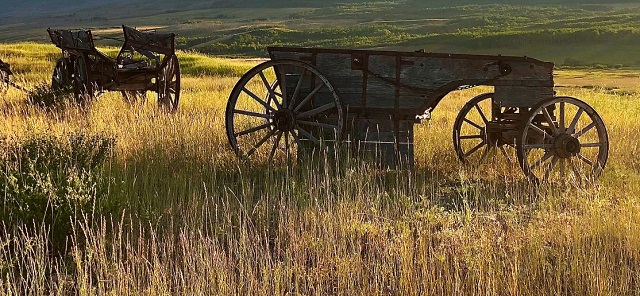
From the C2C Journal
By Barry Cooper, professor of political science, University of Calgary
Canada’s western lands, wrote one prominent academic, became provinces “in the Roman sense” – acquired possessions that, once vanquished, were there to be exploited. Laurentian Canada regarded the hinterlands as existing primarily to serve the interests of the heartland. And the current holders of office in Ottawa often behave as if the Constitution’s federal-provincial distribution of powers is at best advisory, if it needs to be acknowledged at all. Reviewing this history, Barry Cooper places Alberta’s widely criticized Sovereignty Act in the context of the Prairie provinces’ long struggle for due constitutional recognition and the political equality of their citizens. Canada is a federation, notes Cooper. Provinces do have rights. Constitutions do mean something. And when they are no longer working, they can be changed.
-
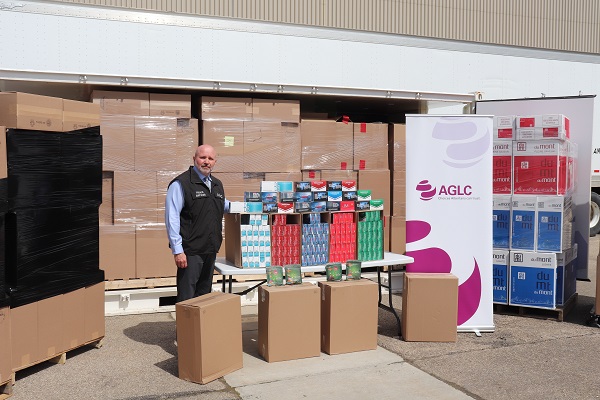
 Alberta1 day ago
Alberta1 day ago30 million contraband cigarettes valued at $25 million dollars seized in Alberta
-

 COVID-197 hours ago
COVID-197 hours agoCOVID Lab Leak: Over four later, EcoHealth Alliance funding is finally suspended
-

 Alberta2 days ago
Alberta2 days agoProvince announces next step to revamped health care system
-

 Alberta1 day ago
Alberta1 day agoPharmacist-led clinics improve access to health care: Lessons from Alberta
-
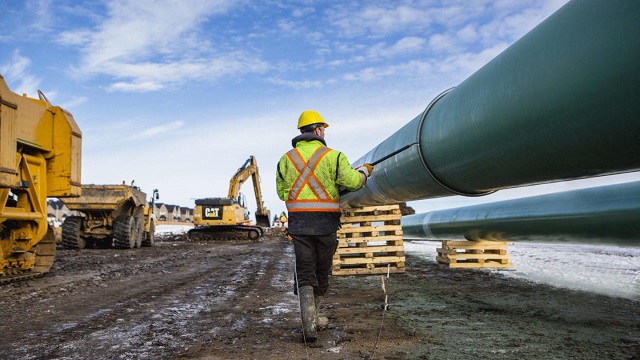
 Canadian Energy Centre1 day ago
Canadian Energy Centre1 day agoTrans Mountain completion shows victory of good faith Indigenous consultation
-
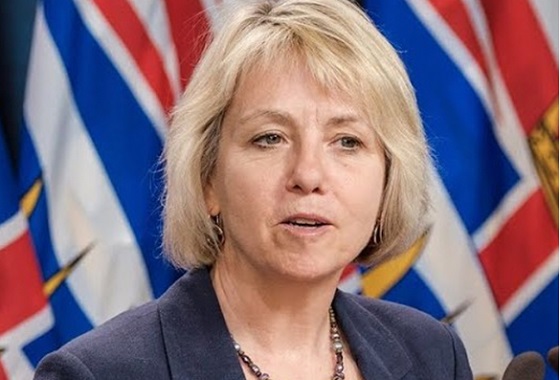
 COVID-191 day ago
COVID-191 day agoHealthcare workers obtain partial win against Bonnie Henry in BC Supreme Court
-

 COVID-1924 hours ago
COVID-1924 hours agoElon Musk-backed doctor critical of COVID response vows appeal after court sides with medical board
-

 COVID-192 days ago
COVID-192 days agoJapan’s most senior cancer doctor: COVID shots are ‘essentially murder’
 1.1 million per year, nearly 450,000 in the last quarter alone: The Justin Trudeau government vows to continue inviting new immigrants at record rates, allegedly to fill shortages of skilled workers, yet private-sector job creation in Canada is lagging, and many immigrants appear to go straight into government work. (Sources of photos: (top) Diary Marif; (middle)
1.1 million per year, nearly 450,000 in the last quarter alone: The Justin Trudeau government vows to continue inviting new immigrants at record rates, allegedly to fill shortages of skilled workers, yet private-sector job creation in Canada is lagging, and many immigrants appear to go straight into government work. (Sources of photos: (top) Diary Marif; (middle)  While housing starts hit all-time records in 2021 and 2022, the new construction was subsumed beneath Canada’s surging population; the national housing shortfall is growing every year and projected to reach 3-4 million units by 2030. (Source of graph:
While housing starts hit all-time records in 2021 and 2022, the new construction was subsumed beneath Canada’s surging population; the national housing shortfall is growing every year and projected to reach 3-4 million units by 2030. (Source of graph:  “We’re seeing governments leave patients for dead”: According to Colin Craig (left), president of public policy research organization Second Street, the catastrophic state of Canada’s health care is likely responsible for over 30,000 preventable deaths-while-waiting per year. (Sources of photos: (middle) The Canadian Press/Nathan Denette; (right) Shutterstock)
“We’re seeing governments leave patients for dead”: According to Colin Craig (left), president of public policy research organization Second Street, the catastrophic state of Canada’s health care is likely responsible for over 30,000 preventable deaths-while-waiting per year. (Sources of photos: (middle) The Canadian Press/Nathan Denette; (right) Shutterstock) Down and down: While Canada’s aggregate gross domestic product (GDP) continues to expand weakly, the metric that really counts – real GDP per individual Canadian – has been plunging and is projected to keep falling, signalling a weakening standard of living. (Sources: (photo) Pexels; (graph)
Down and down: While Canada’s aggregate gross domestic product (GDP) continues to expand weakly, the metric that really counts – real GDP per individual Canadian – has been plunging and is projected to keep falling, signalling a weakening standard of living. (Sources: (photo) Pexels; (graph)  No longer a gap, a chasm: Canada’s invested capital per worker, once comparable to that of the U.S., has fallen dramatically since the Trudeau Liberals came to office in 2015. Says the C.D. Howe Institute: “Businesses see less opportunity in Canada and [this] prefigures weaker earnings and living standards.” (Sources: (photo) The Canadian Press/Paul Chiasson; (graph)
No longer a gap, a chasm: Canada’s invested capital per worker, once comparable to that of the U.S., has fallen dramatically since the Trudeau Liberals came to office in 2015. Says the C.D. Howe Institute: “Businesses see less opportunity in Canada and [this] prefigures weaker earnings and living standards.” (Sources: (photo) The Canadian Press/Paul Chiasson; (graph) 
 For 200 years Rupert’s Land (its flag shown on top left) along with the Northwest and Northeast Territories were the exclusive commercial domain of the Hudson’s Bay Company (HBC), granted by the British Crown; Great Britian officially transferred these vast lands to the Crown in Right of Canada in 1870. (Source of map:
For 200 years Rupert’s Land (its flag shown on top left) along with the Northwest and Northeast Territories were the exclusive commercial domain of the Hudson’s Bay Company (HBC), granted by the British Crown; Great Britian officially transferred these vast lands to the Crown in Right of Canada in 1870. (Source of map:  Obscure but legally important: Canada is often said to have “purchased” Rupert’s Land from the Hudson’s Bay Company, but Canada did not actually pay for the land, only for the company’s capital improvements such as Lower Fort Garry in the Rural Municipality of St. Andrews (aka the Stone Fort, top), Fort Edmonton (middle), depicted here after construction of Alberta’s Legislative Assembly building, and the Hudson’s Bay Brigade Trail (bottom). (Sources of images: (top)
Obscure but legally important: Canada is often said to have “purchased” Rupert’s Land from the Hudson’s Bay Company, but Canada did not actually pay for the land, only for the company’s capital improvements such as Lower Fort Garry in the Rural Municipality of St. Andrews (aka the Stone Fort, top), Fort Edmonton (middle), depicted here after construction of Alberta’s Legislative Assembly building, and the Hudson’s Bay Brigade Trail (bottom). (Sources of images: (top)  “Enter the Union on an equal basis with existing states”: In contrast to Canada, the U.S. Northwest Ordinance of 1787 provided a formal and transparent mechanism by which newly settled territories could graduate to statehood if they met certain conditions – gaining the same rights and privileges as the original 13 states.
“Enter the Union on an equal basis with existing states”: In contrast to Canada, the U.S. Northwest Ordinance of 1787 provided a formal and transparent mechanism by which newly settled territories could graduate to statehood if they met certain conditions – gaining the same rights and privileges as the original 13 states. “Our lives our fortunes and our sacred honour”: Métis leaders Louis Riel (top left) and John Bruce (top right) saw the 1870 transfer of Rubert’s Land to Canada as an act of “abandonment” by the British Crown; to protect the interests of the Red River Settlement (bottom), they “refus[ed] to recognise the authority of Canada.” (Sources: (top left photo) Library and Archives Canada, C-018082; (top right photo)
“Our lives our fortunes and our sacred honour”: Métis leaders Louis Riel (top left) and John Bruce (top right) saw the 1870 transfer of Rubert’s Land to Canada as an act of “abandonment” by the British Crown; to protect the interests of the Red River Settlement (bottom), they “refus[ed] to recognise the authority of Canada.” (Sources: (top left photo) Library and Archives Canada, C-018082; (top right photo)  “Provinces in the Roman sense”: According to political scientist James Mallory, Canada’s Prairie provinces were akin to “provinciae” in ancient Rome – conquered lands whose inhabitants were not citizens and who existed to serve the interests of the Imperial Capital and the Italian heartland. Shown, the fall of Macedonia in 168 BC depicted in The Triumph of Aemilius Paulus by Carle Vernet, 1789. (Source of painting:
“Provinces in the Roman sense”: According to political scientist James Mallory, Canada’s Prairie provinces were akin to “provinciae” in ancient Rome – conquered lands whose inhabitants were not citizens and who existed to serve the interests of the Imperial Capital and the Italian heartland. Shown, the fall of Macedonia in 168 BC depicted in The Triumph of Aemilius Paulus by Carle Vernet, 1789. (Source of painting:  In 1905 the Dominion of Canada carved the new provinces of Alberta and Saskatchewan out of portions of the Northwest Territories; the newcomers were treated as distinctly second-class in comparison to the original provinces, among other things only gaining full control over their lands and natural resources in 1930. (Sources of photos (clockwise, starting top-left):
In 1905 the Dominion of Canada carved the new provinces of Alberta and Saskatchewan out of portions of the Northwest Territories; the newcomers were treated as distinctly second-class in comparison to the original provinces, among other things only gaining full control over their lands and natural resources in 1930. (Sources of photos (clockwise, starting top-left):  The Prairie provinces continued to be subjected to destructive Laurentian policies throughout the 20th century, such as prolongation of the Canadian Wheat Board, official bilingualism and the National Energy Program, implemented by Pierre Trudeau in 1981 (shown on bottom left, to the right of Alberta premier Peter Lougheed in the centre). Depicted on bottom right, oil sands facility at Mildred Lake. (Sources of photos: (top left) Canadian Government Motion Picture Bureau/Library and Archives Canada/C-064834; (bottom left) The Canadian Press/Dave Buston; (bottom right)
The Prairie provinces continued to be subjected to destructive Laurentian policies throughout the 20th century, such as prolongation of the Canadian Wheat Board, official bilingualism and the National Energy Program, implemented by Pierre Trudeau in 1981 (shown on bottom left, to the right of Alberta premier Peter Lougheed in the centre). Depicted on bottom right, oil sands facility at Mildred Lake. (Sources of photos: (top left) Canadian Government Motion Picture Bureau/Library and Archives Canada/C-064834; (bottom left) The Canadian Press/Dave Buston; (bottom right)  “It’s not like Ottawa is a national government”: The Alberta Sovereignty within a United Canada Act, passed in late 2022 by the UCP government of Premier Danielle Smith, pictured, aims to strengthen the province’s ability to limit unconstitutional intrusions of federal policy and law into areas of provincial jurisdiction, thereby reaffirming that Canada is a federal state. (Source of photo: The Canadian Press/Jason Franson)
“It’s not like Ottawa is a national government”: The Alberta Sovereignty within a United Canada Act, passed in late 2022 by the UCP government of Premier Danielle Smith, pictured, aims to strengthen the province’s ability to limit unconstitutional intrusions of federal policy and law into areas of provincial jurisdiction, thereby reaffirming that Canada is a federal state. (Source of photo: The Canadian Press/Jason Franson) Although attacked by critics, Alberta’s Sovereignty Act has received strong popular support for challenging the Justin Trudeau government’s constant intrusions into areas of provincial constitutional jurisdiction; the author points out that the Constitution does not require provinces to enforce federal laws, and that the Supreme Court of Canada has confirmed this. Shown, supporters of the Sovereignty Act outside the Alberta legislature, December 2022. (Source of photo:
Although attacked by critics, Alberta’s Sovereignty Act has received strong popular support for challenging the Justin Trudeau government’s constant intrusions into areas of provincial constitutional jurisdiction; the author points out that the Constitution does not require provinces to enforce federal laws, and that the Supreme Court of Canada has confirmed this. Shown, supporters of the Sovereignty Act outside the Alberta legislature, December 2022. (Source of photo:  “Clear majority on a clear question”: Two years after the 1998 Quebec Secession Reference case before the Supreme Court of Canada, the Liberal government of Jean Chrétien (on bottom, leaning forward) introduced the Clarity Act, establishing the conditions under which Canadian provinces may be allowed to begin the process of secession. The author considers this another act violating the concept of federalism, with Ottawa unilaterally calling the shots and placing provinces in a subordinate position. (Sources of photos: (top)
“Clear majority on a clear question”: Two years after the 1998 Quebec Secession Reference case before the Supreme Court of Canada, the Liberal government of Jean Chrétien (on bottom, leaning forward) introduced the Clarity Act, establishing the conditions under which Canadian provinces may be allowed to begin the process of secession. The author considers this another act violating the concept of federalism, with Ottawa unilaterally calling the shots and placing provinces in a subordinate position. (Sources of photos: (top) 

